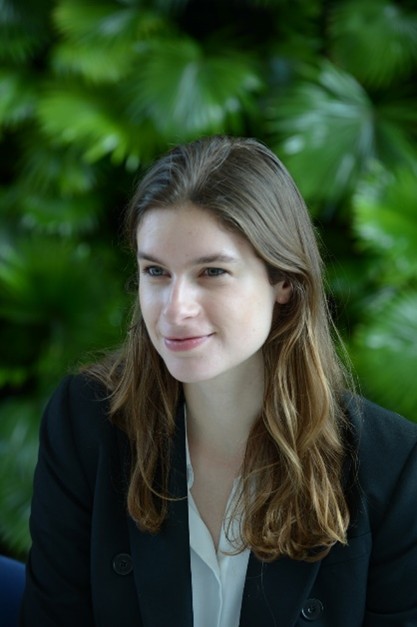Global climate finance may already have exceeded US$2 trillion in 2024 and with the UNFCCC aiming to mobilise another US$1.3 trillion at COP30, specifically for developing countries, it is clear that the money needed to respond to climate change exists. Yet much of that capital remains idle. In this AIB podcast episode, we invited three experts for a broad-ranging discussion about how finance, technology and policy could work together for a sustainable future. Over candid discussions, a clear picture emerged: capital needs clarity of impact and shared risks to flow. Our speakers share their insights on key questions, including what is green finance, why is available capital idle, what are high potential technologies for green financing and what is just transition.
Ya ya ya ya ya yes ya yes ya yes Ya ya ya ya ya yes ya yes ya yes Ya ya ya ya ya yes ya yes ya yes Ya ya ya ya ya yes ya yes ya yes Ya ya ya ya ya yes ya yes ya yes Ya ya ya ya ya yes ya yes ya yesya ya
...
Global climate finance may already have exceeded US$2 trillion in 2024 and with the UNFCCC aiming to mobilise another US$1.3 trillion at COP30, specifically for developing countries, it is clear that the money needed to respond to climate change exists. Yet much of that capital remains idle. In this AIB podcast episode, we invited three experts for a broad-ranging discussion about how finance, technology and policy could work together for a sustainable future. Over candid discussions, a clear picture emerged: capital needs clarity of impact and shared risks to flow. Our speakers share their insights on key questions, including what is green finance, why is available capital idle, what are high potential technologies for green financing and what is just transition.
Ya ya ya ya ya yes ya yes ya yes Ya ya ya ya ya yes ya yes ya yes Ya ya ya ya ya yes ya yes ya yes Ya ya ya ya ya yes ya yes ya yes Ya ya ya ya ya yes ya yes ya yes Ya ya ya ya ya yes ya yes ya yesya ya
Green Finance and idle capital. “Green finance is, in a lot of ways, very similar to conventional finance. It’s about the allocation of resources,” said Prof Johan Sulaeman, Director of SGFIN at the National University of Singapore. “But I see it as a powerful tool to align economic progress with environmental and social responsibility. Profitability and sustainability don’t have to be at odds; they can work hand in hand.” Dr Vincent Lim, CFO of A*STAR stressed the need for clarity and data. “There are a lot of people who talk about green finance,” he said. “But capital is idle if we don’t have clarity. We need to go deeper — ISO 14064 for calculating emissions, ISO 14068 for carbon neutrality, ISSB S2 for disclosure. Green finance today should be slightly more climatic and slightly clearer.” Eloise O’Carroll, Programme Manager, EU Delegation to Indonesia noted the increased use of observation in recent years, “…a number of Sentinel satellites managed by the European Space Agency…assess things like forest cover, water, and coastal change — to see the impact of human life on the planet. That data inspires confidence among investors because you can finally see what you’re financing.”
Harnessing Green Innovation. Data can unlock trust, but finance still needs to meet technology halfway. Dr Lim advocated that the ability to move green finance forward is through clarity and at the same time, helping others to understand deep tech and power of innovation. Simple de-carbonisation gains, such as by reducing electricity and water use, have already been achieved. He said, “This is an exciting time … carbon capture and utilisation, sustainable aviation fuel, hydrogen… are at least three [areas], where the potential for innovation and research is so much.” Prof Sulaeman also highlighted the importance for blended finance – funds from public and private sectors and philanthropy – to share risks, “If a technology is simple and profitable, it would have been done already. What is left are the difficult, technologically challenging, and currently unprofitable ones. Finance will only flow if we either reduce the risk or increase the potential revenue by generating demand. That’s where regulation and policy come in to provide clarity and stable demand for sustainable products.” O’Carroll said the EU’s European Fund for Sustainable Development Plus provided guarantees, grants and concessional loans as a financial safety net for the private sector.
Helping a Just Transition. Beyond technology, green finance is also about ensuring fairness. For Prof Sulaeman, the term “just transition” exists because climate action cannot come at the expense of those least able to bear it. “The transition to a more sustainable world may result in less sustainable communities,” he warned. “If we make the poorest of the poor pay for our transition, we are not doing right by them. But if we don’t transition, they will also get hurt. Governments and donors need to step in to de-risk these efforts so private capital can support the process.” In the EU, the Green Deal’s Just Transition Fund, worth €20 billion in grants, help regions in Europe and beyond, including in Asia, diversify away from fossil industries, and accelerate renewables and grid development.
The speakers were cautiously optimistic about COP30. Prof Sulaeman called for “less duplication and more transparency.” Dr Lim urged a return to the spirit of Kyoto and Paris for “real agreements, real action.” O’Carroll saw progress worth building on, noting that the world has shifted projected global warming from four degrees to 2.7. While not enough, “…it proves that multilateralism can move the needle.”








Post Your Comments
Be the first to share your thoughts. Your voice matters.